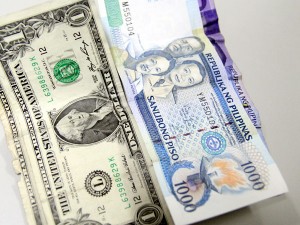Forex reserves eased to $79.6B in April
The country’s foreign exchange reserves were flat at the end of April amid government withdrawals to fund debt payments, which were offset by the entry of loans from multilateral lenders.
Documents released by the Bangko Sentral ng Pilipinas on Wednesday showed the country’s gross international reserves (GIR) remained at comfortable levels, enough to cover up to 11 months’ worth of imports and close to 7 times the country’s short-term external debt.
Reserves at the end of April stood at $79.61 billion, slightly lower than $79.64 billion the previous month. The end-April figure was the lowest since January. Year-on-year, the country’s reserves were down 4.33 percent.
Dollar reserves serve as the country’s last line of defense against external shocks that could lead to a shortage in dollars in the economy, which businesses and the government need to do business with the rest of the world.
The import cover of the country’s reserves—at 11 months as of April—was about the same as the previous month’s level, but lower than the 11.7 months in April of 2013.
Article continues after this advertisementThe slight decline in reserves was due mainly to outflows arising from payments by the national government for its maturing obligations and foreign exchange operations of the BSP.
Article continues after this advertisement“These outflows were partially offset by the foreign currency deposits of the (Bureau of the Treasury) of loan proceeds from multilateral sources,” the BSP said.
The drop in reserves followed the absence of steady inflows from foreign investments, particularly into portfolio holdings such as debt securities, peso-denominated deposits and shares of stock in publicly traded firms.
Latest data from the BSP showed the country’s external payments position or balance of payments (BOP) at a deficit of $336 million in March. A deficit means more money left the country than the amount that went in.
